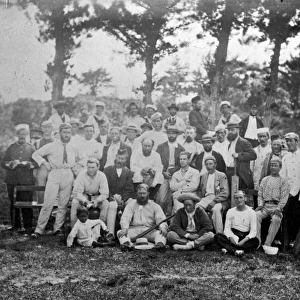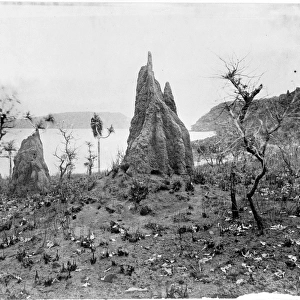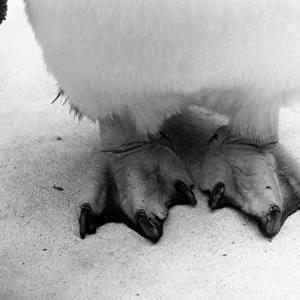Home > Oceania > Australia > Related Images
Nest of Megapodins, Cape York
![]()

Wall Art and Photo Gifts from Mary Evans Picture Library
Nest of Megapodins, Cape York
A photograph taken during the voyage of H.M.S. Challenger (1872-1876) funded by the British Government for scientific purposes. The expedition is believed to have been the first to carry an official photographer
Mary Evans Picture Library makes available wonderful images created for people to enjoy over the centuries
Media ID 8608882
© Mary Evans Picture Library 2015 - https://copyrighthub.org/s0/hub1/creation/maryevans/MaryEvansPictureID/10714187
Archive Australasia Black And White Cape Challenger Exploration Hms Challenger Nest Queensland Torres Voyage Cape York
EDITORS COMMENTS
This evocative photograph captures a nesting site of Megapodins, or sandgrouse, on the shores of Cape York, Australia. Taken during the historic voyage of H.M.S. Challenger between 1872 and 1876, this image is a testament to the groundbreaking scientific expedition funded by the British Government. As the first official photographic record of the voyage, it offers a unique glimpse into the natural world of Australasia during this era. The expedition, led by Sir Charles Wyville Thomson, aimed to explore the world's oceans and make significant discoveries in geology, zoology, and other scientific fields. The photograph of the Megapodin nesting site was likely taken during a daytime stop in Queensland, Australia, as evidenced by the bright sunlight casting long shadows on the sandy beach. The landscape of Cape York, with its rugged cliffs and expansive shoreline, provides a striking backdrop to the nesting birds. Megapodins, also known as sandgrouse, are native to Australia and New Guinea, and are known for their unique nesting habits. They dig shallow pits in the sand and lay their eggs there, which are then incubated by the heat of the sun during the day. This photograph, taken during the Challenger expedition, is a valuable historical record of both the natural world and the scientific exploration of the late 19th century. It offers a glimpse into a time when the world was still largely unknown, and scientific discovery was driven by a sense of curiosity and a desire to expand human knowledge.
MADE IN AUSTRALIA
Safe Shipping with 30 Day Money Back Guarantee
FREE PERSONALISATION*
We are proud to offer a range of customisation features including Personalised Captions, Color Filters and Picture Zoom Tools
FREE COLORIZATION SERVICE
You can choose advanced AI Colorization for this picture at no extra charge!
SECURE PAYMENTS
We happily accept a wide range of payment options so you can pay for the things you need in the way that is most convenient for you
* Options may vary by product and licensing agreement. Zoomed Pictures can be adjusted in the Cart.







